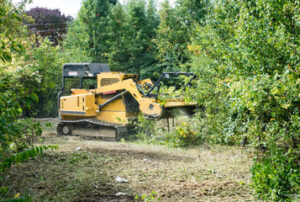Having a healthy lawn and landscape increases the value of your property and improves air quality. Regional material costs and climate conditions are major factors that influence landscaping pricing.

If sod is not an option, the first step in planting a new lawn is to prepare the soil. This includes tilling, grading and adding soil amendments. Contact Prime Cut Lawn and Landscaping for professional help.
An attractive lawn can be the focal point of a property, adding to its value and curb appeal. But a healthy lawn requires more than just water and fertilizer to thrive. It also needs to be mowed properly, and regular pruning, trimming and disease/pest management are essential to keep it looking its best.
It’s also important to choose plant species that are suited for the environment and your lawn’s use. Consider a variety of grasses, flowers and shrubs, including native varieties that help support biodiversity. Native plants are well-adapted to local climates and soil conditions, so they require less water and pesticides than non-native species.
When choosing trees and plants for your landscape, pay close attention to their sun requirements. Different plants need varying levels of sunlight to thrive, and some may even die if they don’t get enough exposure. Incorporating a variety of plants that have varying sun requirements can create a visually appealing landscape that’s also balanced in its light needs.
Another consideration when selecting plants is their color. While this may seem like a minor detail, it can make a huge difference when it comes to aesthetics and the overall look of your landscape. It’s important to select colors that blend nicely together so they complement each other and form a harmonious display.
Aside from the aesthetic value of a landscape, plants play a significant role in reducing erosion and preventing sediment from flowing off your property into nearby streams and lakes. Erosion can be caused by a variety of factors, including establishing lawns with bare patches or tilling gardens. A simple solution is to maintain a buffer of planted or mulched perennial flower and shrub beds around your garden area.
Soil
Soil is more than just dirt – it’s a vital living ecosystem that sustains your lawn and garden. The soil nutrient cycle, biological control of pests and diseases, and regulation of water and air supply all depend on healthy soil. Best practices for healthy soil include regular aeration, proper irrigation and balanced fertilization, and routine mowing. This ensures that your grass and flowers have the conditions they need to thrive.
Aeration helps prevent excessive soil compaction, which starves grass roots of oxygen and impedes nutrient uptake. It also reduces thatch buildup, a layer of living and dead grass stems and roots that can clog soil and inhibit growth. Rainscapes’ comprehensive aeration services ensure that your landscape receives the proper level of aeration for optimal soil conditions.
Healthy soil teems with microbes that help to break down organic matter, releasing nutrients in plant-available forms. This process is accelerated by soil enhancement treatments, such as Sup-R-Soil, which encourages greater microbe activity in the soil food web and enables your plants to absorb these nutrients more effectively.
Sup-R-Soil’s unique formulation enhances soil structure and improves the availability of key nutrients such as nitrogen, phosphorus, potassium and iron. It also improves soil moisture retention, helping your lawn resist drought conditions. This means that your yard will require less frequent watering, which can help to cut down on over-watering and the subsequent environmental concerns such as root rot and fungal infections. As an added benefit, Sup-R-Soil promotes aeration and soil consolidation to minimize erosion and surface runoff, which can transport pollutants into local waters and impact ecological health.
Water
Watering is one of the most important lawn care practices for a healthy and beautiful landscape. Efficient watering techniques minimize environmental impact and reduce reliance on public water supplies. In addition, regular fertilization and weed control can improve soil quality and water retention, reducing the need for excessive irrigation.
Overwatering suffocates lawn roots, reduces oxygen availability, and encourages the growth of fungi and other undesirable organisms that weaken turf. Overwatering can also lead to root rot and other plant health problems. It is best to water only when necessary, avoiding frequent or shallow watering sessions. It is recommended that commercial lawns receive at least an inch of water per week.
When watering, try to do so in the morning. This decreases evaporative loss and prevents the buildup of salts in the soil. It also avoids the possibility of ice formation on grass and sidewalks during winter. Avoid watering the evening, as it can encourage a shallow root system and cause lawn disease.
Consider using a rain barrel to harvest rainwater and utilize it for watering. This not only saves money on water bills but also reduces evaporative loss and reduces the amount of fertilizers needed for your lawn.
Xeriscaping is a landscaping technique that focuses on water conservation. It involves the use of drought-tolerant plants, efficient irrigation systems, and other strategies to lower your water usage.
Fertilizer
Over time, the soil that grass grows in naturally loses essential nutrients. Fertilizers replenish these nutrients to ensure a healthy lawn. They are available in a variety of formulations to match the specific needs of different grass species and soil conditions. The best fertilizers have a balanced mix of nitrogen, phosphorus and potassium (N-P-K). Choosing the right formula is vital. Grass can be impacted by a range of factors, including weather conditions, weed competition and soil compaction. A soil test can help identify deficiency symptoms and recommend the best fertilizer type for your lawn.
When applying a fertilizer, be sure to spread it evenly and thoroughly. Water the lawn shortly afterward to help the nutrients travel through the soil and be absorbed by the roots. Avoid mowing the lawn right after application to prevent grass from sacrificing root growth for leaf growth.
Using the right fertilizer helps to support healthy plants and prevent damage from insects and disease. Other lawn care tasks, like aeration and dethatching, can reduce soil compaction that inhibits grass growth and prevents nutrient absorption.
Many retail and garden centers offer a wide selection of fertilizers, including granular and liquid options. You can also find eco-friendly, organic fertilizer products from brands such as Espoma or Milorganite.
Pests
Pests feed on grass and plants, destroying their beauty and causing damage to the lawn ecosystem. The key to preventing pest problems is preventive maintenance, proper identification and the use of cultural, mechanical and/or targeted chemical control strategies. A healthy, dense lawn will crowd out weeds and be less attractive to insects. The most effective strategy for controlling pests is to follow an integrated pest management (IPM) plan.
IPM begins with determining the level of pest action you are willing to tolerate. Once this decision is made, routine monitoring will help discover pests and their environmental conditions as early as possible. The information gathered from this step will determine the proper course of action to take, including an appropriate pesticide application.
A healthy lawn is teaming with insect life, and most of these insects are beneficial. Several species, however, can cause damage to your yard and its vegetation. Some insects destroy plant roots, allowing weeds to thrive. Others suck sap from garden and ornamental plants, leading to weakening or death. Still others attract serious ant activity because they excrete a sweet substance that ants are attracted to. This substance, called honeydew, eventually sprouts blackish mold that triggers an allergic reaction with some people.
If you choose to apply pesticides, always begin with the least harmful and most natural options — organic and/or “green” products. Avoid spraying broad-spectrum products that kill all insects, including good ones. Start with a low rate of application and monitor for results. Then, move to a moderate rate of application and continue monitoring. Other preventive measures include: keeping the yard trimmed and weed free. This includes regularly trimming back bushes and trees to prevent overgrowth, which offers hiding spots for many pests.


